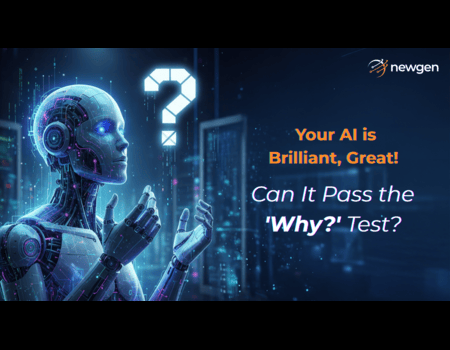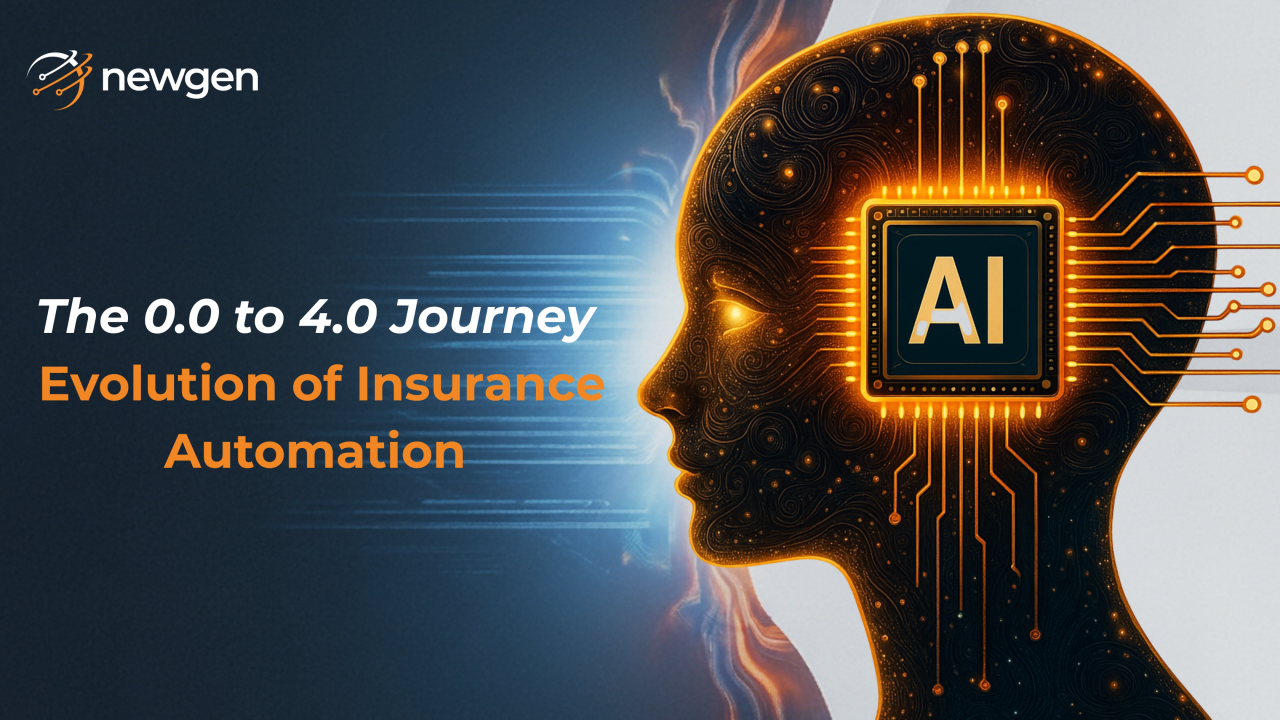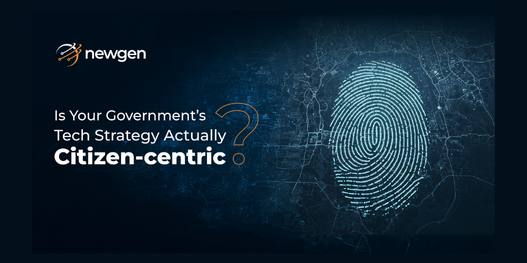Connect with us on LinkedIn
Newgen Software is a globally recognized provider of Low Code Digital Transformation Platform
Digital convenience? For many of us, it has become second nature. Food, rides, shopping or availing healthcare facilities, all just a tap away.
Meanwhile, government services are still catching up. Sure, some departments have made impressive strides; you can file taxes online or renew licenses in minutes. But let’s be honest, many still run on paper forms, disconnected systems, and endless waiting games. Even in 2025, it’s not uncommon to submit a request and hear… nothing. Frustrating for citizens? Absolutely. And, just as frustrating for the public servants stuck working with outdated tools.
But the good thing is the tide is turning. Smart agencies are already using AI to optimize processes, so interacting with the government feels as smooth as ordering food deliveries, without cutting corners on legality. The future’s already happening in pockets; now it just needs to go mainstream.
Ensuring these advancements become the norm, not the exception. When services are slow or confusing, public trust gets adversely impacted. But when done right, digital transformation in government can be just as seamless as the best consumer tech, only with far greater impact.
With AI now at the forefront, the challenge is clear how do public agencies design citizen service frameworks that are trustworthy at every step?
The State of Global AI Adoption in Governments
The 2024 Government AI Readiness Index reviewed 188 countries and examined 40 indicators across three pillars, including Government, Technology Sector, and Data & Infrastructure. The key findings included:
- A rise in AI strategies across low- and middle-income countries
- The US is leading in AI Readiness by relying heavily on the technology sector
- Middle-income economies are closing the AI-readiness gap
- Global AI governance is continuing to take shape along with the regional cooperation
Over 35 countries now have national AI strategies, the EU’s 2023 AI Act guarantees citizen-centric safeguards, and a recent U.S. executive order tightens AI safety, security and trust. This highlights a crucial realization, i.e., simplifying public services mandates perfect synchronization between two fundamental elements, including:
- A whole-of-government digital identity and data sharing infrastructure that smoothly functions across agencies
- An AI-first approach built on trust; systems designed with transparency and accountability coded in their DNA
With these pointers in mind, two essentials come into focus:
1. The Digital Imperative
Digital services are mission-critical to keep society functioning, handling everything from emergency loans to managing health records without hitting a pause. A 2025 productivity McKinsey study revealed that $3.5 trillion per year of additional public-sector value could be achieved through systemic productivity improvements. Agencies are aggressively moving services online, like digitizing voter registration and automating back-office tasks.
In fact, in the OECD survey, governments emphasized on the need for adaptable governance and resilient digital public infrastructure as foundations for long-term success.
2. The Trust Imperative
High-tech tools alone won’t solve everything. Trust in government has never been more fragile. A recent OECD data revealed a troubling gap, while 44% say they have low or no trust in their governments, only 39% expressed confidence in national institutions.
What Citizens Demand?
- Transparency (How was a specific decision made?)
- Control (Can I correct or appeal this?)
- Fairness (Does this work equally well for everyone?)
Closing this trust gap is a core responsibility of any public agency by:
- Designing citizen-centric services that meet needs quickly and equitably
- Embedding governance so every automated decision has a clear audit trail
- Signalling accountability by securing and explaining each system
Trust can never be a CHECKBOX, it’s the FOUNDATION. Without it, even the most efficient systems risk rejection. Every new system must be secure, explainable, and auditable.
Government Uninterrupted: How AI Keeps Essential Services Running Smoothly
Decoding the New Service Standard
- Citizens now expect government transactions to be as seamless as their favorite apps
- AI handles routine work invisibly, freeing staff for complex cases
- Each interaction, whether a permit approval or benefit claim, becomes a trust-building moment
The Accountability Advantage
- Automated systems provide complete audit trails of every decision
- Real-time dashboards give supervisors unprecedented visibility
- Citizens receive clear explanations alongside faster outcomes
Always-on Governance
- No more ‘business hours’ limitations for essential services
- Systems that learn from each interaction to prevent future delays
- Disaster-ready infrastructure that adapts to surges in demand
How AI Helps Ensure Frictionless Service Delivery and Good Governance
No More Lost Paperwork
- Smart systems classify, route, and track every document
- Tireless assistants never misplace files
24/7 Self-service
- Chatbots that solve problems
- Personalized updates without waiting on hold
Easy-to-understand Decisions
- Clear audit trails, showing how and why choices were made
- Built-in checks for fairness and compliance
Connecting the Dots
- Birth certificates to business licenses, all linked securely
- No more repeating your story to different departments
The Way Forward with NewgenONE
We encourage government leaders, like you, to leverage NewgenONE, an AI-first low-code platform, to spin up a complete digital service with digital trust. By leveraging our wide range of offerings for government leaders, including Citizen Experience Management, Case Management, Electronic Documents and Records Management System, Digital Workspace Management, Tender Management, and Grants Management, you don’t have to choose between speed and security. Our AI-first platform delivers compliant digital services while empowering you to reform government-to-government (G2G) operations, enhance government-to-citizen (G2C) interactions, and enable seamless government-to-business (G2B) transactions.
You might be interested in




